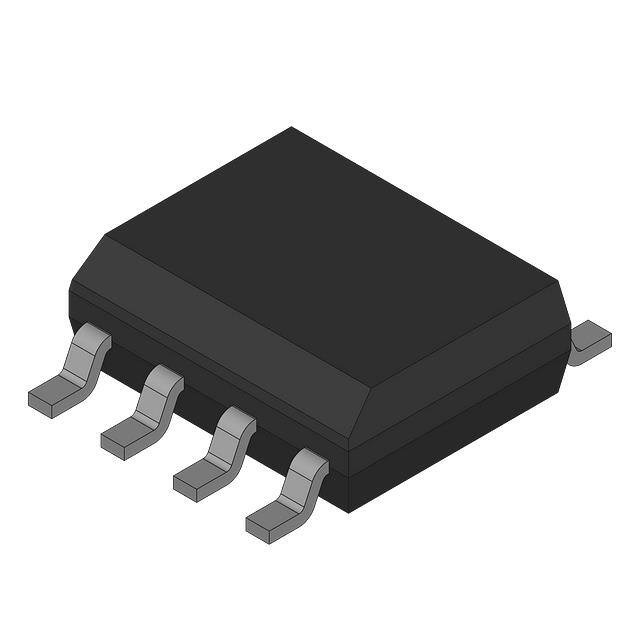2025 Global Semiconductor Industry: Top 10 Trends & Innovations
The semiconductor industry is poised for a transformative year in 2025, driven by breakthroughs in AI, automotive tech, and advanced manufacturing. As a leader in cutting-edge solutions, we break down the Top 10 Trends shaping the industry, supported by technical specifications, market insights, and actionable forecasts.
1. 2nm Process Nodes: The New Frontier
The race to 2nm and below dominates semiconductor manufacturing, with TSMC, Samsung, and Intel leading the charge. Key developments:
- TSMC N2: Enters mass production in H2 2025, leveraging GAA-FET (Gate-All-Around) architecture for 15% speed gains and 30% power savings vs. 3nm.
- Samsung SF2: Targets mobile and HPC markets with SF2X (AI-optimized) and SF2Z (backside power delivery) variants.
- Intel 18A: Combines RibbonFET transistors and PowerVia tech for automotive and data center applications.
Featured Product: TSMC 2nm Wafer
| Parameter | Specification |
|---|---|
| Transistor Density | 350 million/mm² |
| Power Efficiency | 30% reduction vs. 3nm |
| Applications | AI accelerators, mobile processors |
2. HBM4: Accelerating AI Memory Demands
HBM4 enters mass production in 2025, driven by AI server demands:
- Layer Stacking: Up to 16 layers (vs. 12 in HBM3), enabling 2048-bit interfaces and 6.4 GT/s speeds.
- Key Players: SK Hynix and Samsung prioritize HBM4 for NVIDIA’s GB200 and Meta’s AI clusters.
Featured Product: SK Hynix HBM4
| Parameter | Specification |
|---|---|
| Bandwidth | 1.5 TB/s per stack |
| Process Node | TSMC 3nm |
| Power Consumption | <5pJ/bit |
3. Advanced Packaging: Scaling Beyond Moore’s Law
CoWoS and 3D IC technologies address chiplet integration challenges:
- TSMC CoWoS: Expands reticle size to 5.5x, supporting 12 HBM4 stacks per package.
- Hybrid Bonding: Enables <1µm interconnect pitch for high-density AI chips.
Featured Product: Intel Foveros Direct
| Parameter | Specification |
|---|---|
| Interconnect Density | 10x vs. traditional packaging |
| Thermal Resistance | 0.2°C/W |
| Applications | Data centers, edge AI |
4. AI Processors: The Compute Powerhouse
Next-gen AI chips redefine performance benchmarks:
- NVIDIA GB300: Blackwell Ultra architecture delivers 35x faster AI inference than H100.
- AMD CDNA 4: Targets 35x higher AI推理性能 for hyperscale data centers.
Featured Product: NVIDIA GB200 NVL72
| Parameter | Specification |
|---|---|
| FP8 Performance | 1.4 exaflops |
| Memory Bandwidth | 8 TB/s |
| Power Efficiency | 1.2kW (liquid-cooled) |
5.Automotive Semiconductors: Electrification Meets Autonomy
EVs and L4 autonomy drive $100B+ market growth:
- SiC MOSFETs: Infineon’s CoolSiC™ cuts EV power loss by 50%.
- Horizon Journey 6: Enables <10ms latency for autonomous driving.
Featured Product: Infineon CoolSiC™ 1200V MOSFET
| Parameter | Specification |
|---|---|
| Switching Frequency | Up to 1MHz |
| Thermal Resistance | 0.3°C/W |
| Applications | EV inverters, solar systems |
6. Quantum Computing: From Labs to Commercialization
IBM’s Kookaburra processor (1,386 qubits) and modular quantum systems target material science and drug discovery.
7. Silicon Photonics: Bridging Data Center Bottlenecks
1.6T optical engines and COUPE packaging (TSMC) reduce latency in AI clusters.
8. RISC-V: Disrupting Traditional Architectures
RISC-V adoption surges in IoT and automotive:
- Alibaba T-Head: 300+ licensees and 800M+ chips shipped.
- Tenstorrent: Jim Keller’s RISC-V-based AI accelerators challenge NVIDIA.
9. Sustainability: Green Manufacturing Takes Center Stage
TSMC targets 100% renewable energy by 2050, while Intel’s Carbon-Neutral 2040 plan reshapes fabs.
10. Supply Chain Resilience: Localization vs. Globalization
Geopolitical tensions spur 18 new 300mm fabs in 2025, with China and the Americas leading capacity expansion.
FAQ: 2025 Global Semiconductor Industry Trends
Q1: How will 2nm nodes impact AI chip performance?
A1: TSMC’s 2nm process boosts transistor density by 40%, enabling AI chips like NVIDIA’s GB300 to achieve 35x faster inference while cutting power by 30%.
Q2: Why is HBM4 critical for AI servers?
A2: HBM4’s 16-layer stacking and 6.4 GT/s speeds address bandwidth bottlenecks in training LLMs, reducing data transfer latency by 50%.
Q3: What drives RISC-V’s growth in automotive?
A3: Open-source flexibility and 50% lower licensing costs make RISC-V ideal for custom ADAS chips, with Alibaba’s T-Head securing 300+ automotive clients.
Sources: WSTS, SEMI, TSMC, SK Hynix, Infineon, IBM, and industry reports.


